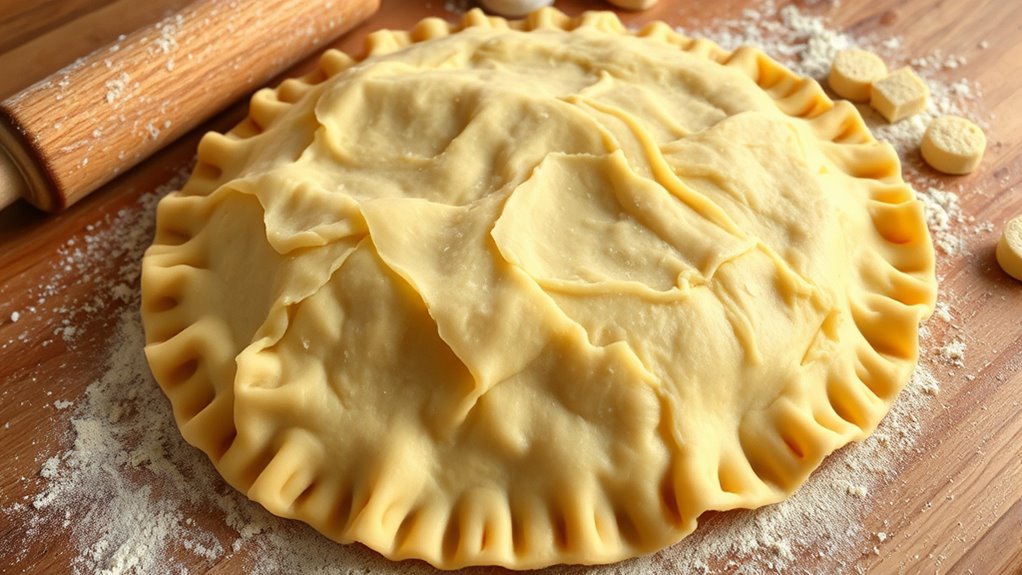To make a flaky pie crust, you’ll need 2 ½ cups of all-purpose flour, 1 cup of cold unsalted butter, and 6-8 tablespoons of ice water. Start by mixing the flour and a pinch of salt, then cut in the chilled butter until crumbly. Add ice water gradually until combined, but don’t overwork the dough. Chill for at least 30 minutes before rolling it out. With this foundation, there’s so much more you can explore in the world of pie!
Ingredients and Quantity
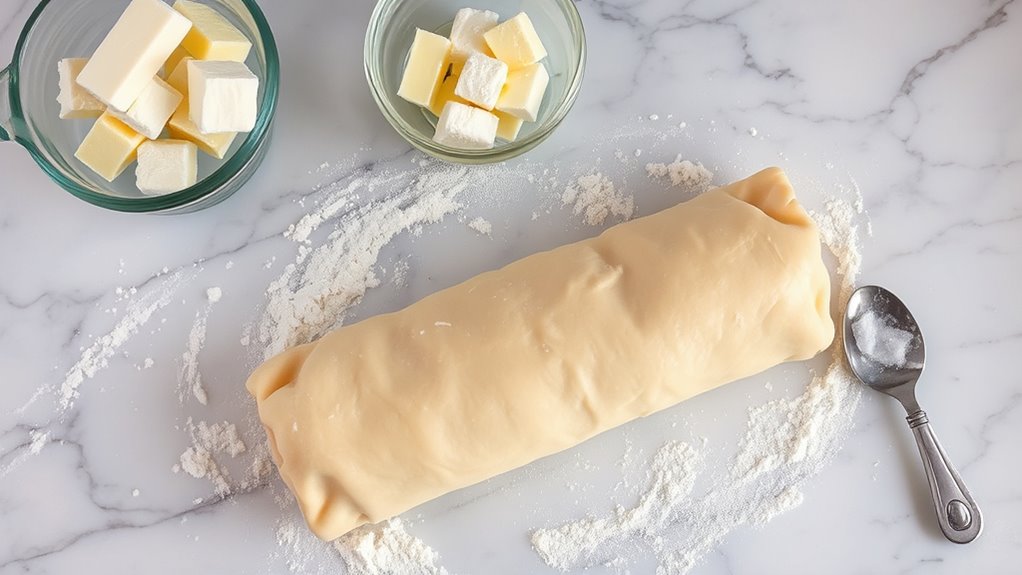
When it comes to crafting the perfect flaky pie crust, the ingredients you choose are essential. Start with high-quality flour, as it forms the backbone of your crust. Add cold butter, which creates those delightful flaky layers. A pinch of salt enhances the flavor, and ice water helps bind everything together without melting the butter.
Here’s a quick overview of the essential ingredients and their quantities:
| Ingredient | Quantity |
|---|---|
| All-purpose flour | 2 ½ cups |
| Unsalted butter | 1 cup (cold) |
| Ice water | 6-8 tablespoons |
Preparations
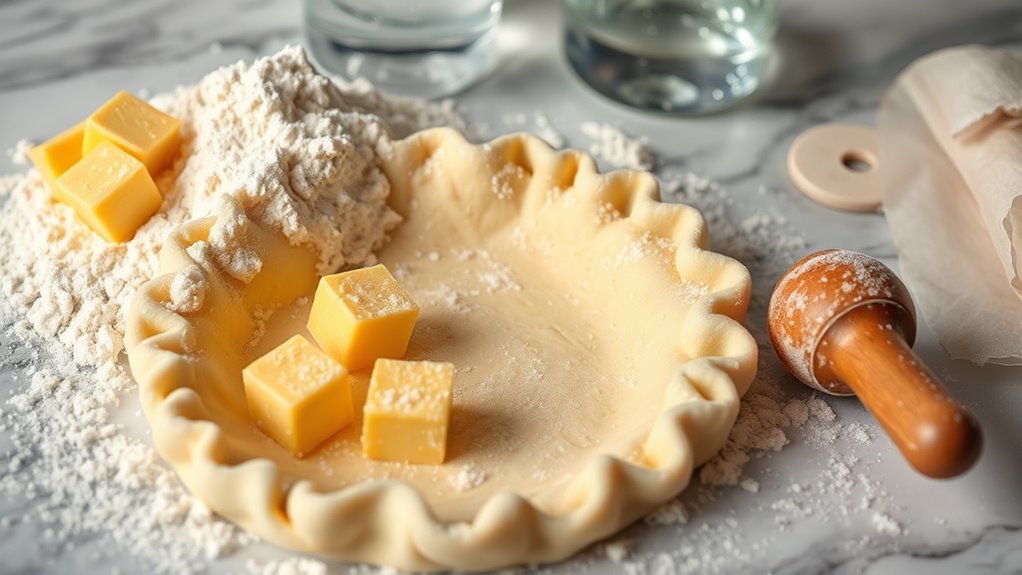
Before you plunge into making your flaky pie crust, it’s important to prepare your workspace and gather all your ingredients. This’ll keep you organized and in the flow of creation. Start by measuring flour accurately; it’s the foundation of your crust. Make certain everything’s within reach, so you can enjoy the process without interruptions.
Here’s a quick checklist to help you prepare:
- All-purpose flour
- Unsalted butter (preferably chilled)
- Ice water
- Sugar (if you’re feeling adventurous!)
- Salt
Once you’ve got everything ready, take a moment to chill your dough after mixing. Chilling it will help guarantee that your crust turns out flaky and tender. Now, you’re all set to create a delicious pie crust!
Tools / Kitchenware Required
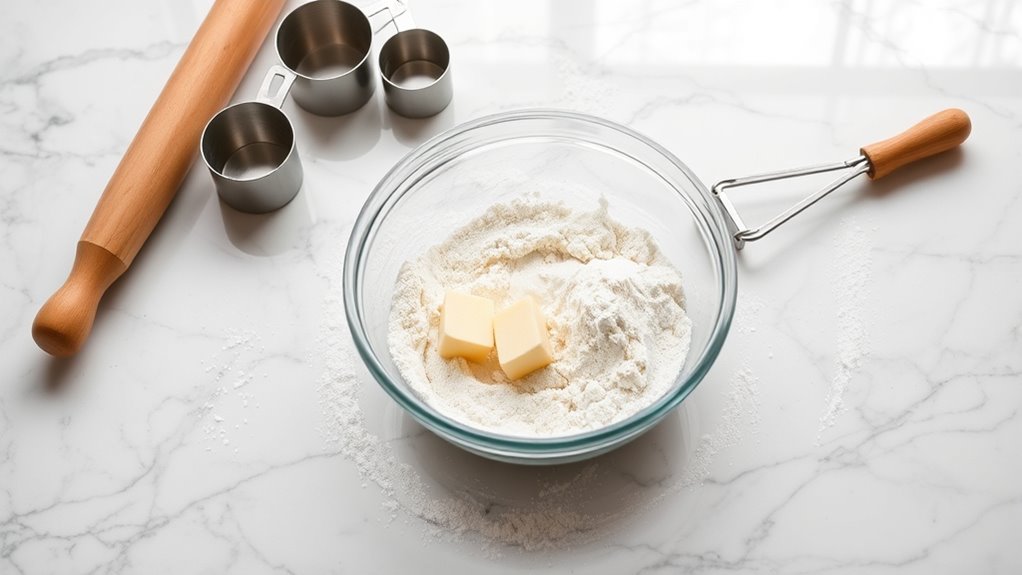
Now that you’ve got your ingredients prepped and ready to go, it’s time to focus on the tools and kitchenware that’ll make your pie crust-making experience a breeze. Having the right tools can really enhance your freedom in the kitchen, allowing your creativity to shine. Here’s a handy list of essentials:
| Tool | Purpose | Notes |
|---|---|---|
| Pie dishes | Shape your crust | Choose glass or metal |
| Rolling pins | Roll out dough | Opt for a sturdy model |
| Baking sheets | Bake your pies | Use non-stick variety |
| Pastry brushes | Apply egg wash or butter | Silicone works great |
| Measuring cups | guarantee accurate amounts | Use nested sets |
With these tools at your side, you’re all set to create that perfect flaky crust!
How to Cook
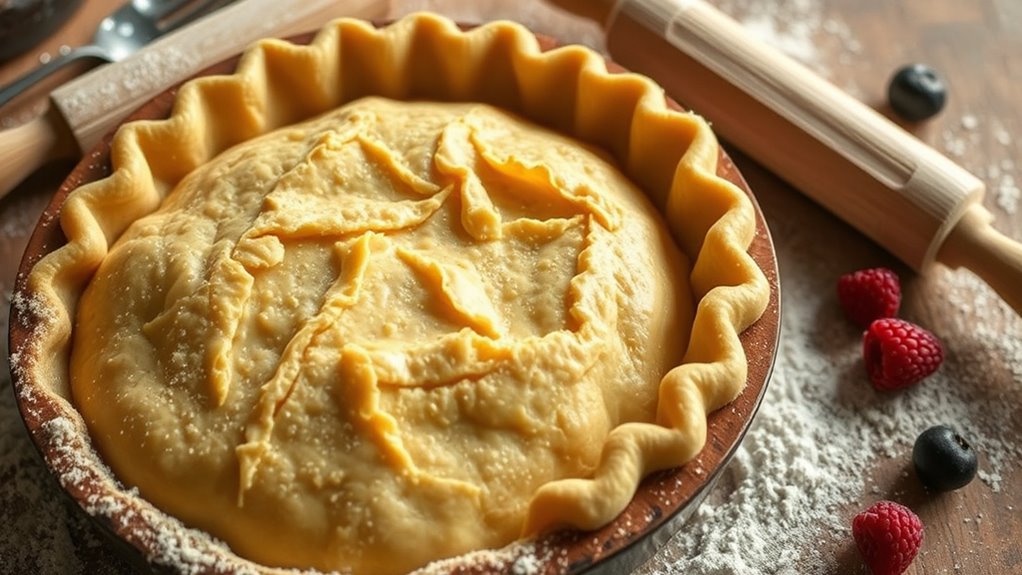
- Use cold butter to achieve a flakier pie crust.
- Handle the dough gently to avoid overworking it.
- Chill the dough before rolling it out to keep it firm.
- Experiment with different pie variations to find your favorites.
- Pre-bake (blind bake) the crust for a crispier texture, especially when using custard fillings.
How to Serve
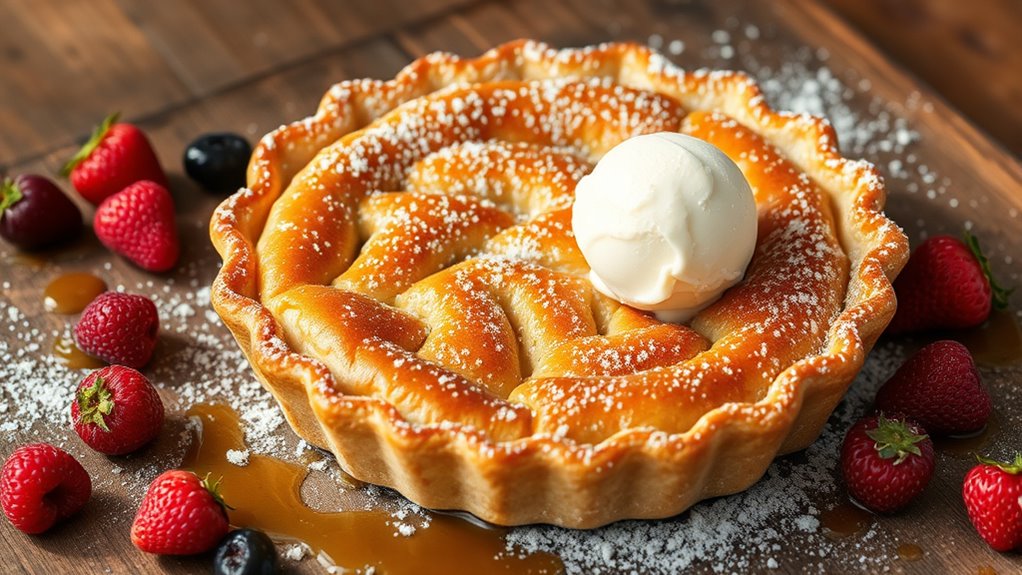
Serving your flaky pie crust is just as important as creating it, since presentation can elevate the overall experience. Once your pie is baked to golden perfection, let it cool slightly before slicing. For serving suggestions, consider a dusting of powdered sugar or a drizzle of caramel sauce to enhance its visual appeal. Pairing ideas can take your pie to new heights; serve it with a scoop of vanilla ice cream or a dollop of freshly whipped cream to create a delightful contrast of textures. Fresh fruit or a sprinkle of nuts can add a vibrant touch, too. Remember, the right accompaniments not only elevate flavor but also invite your guests to indulge in the freedom of enjoying every flaky bite.
Tips
Creating a perfect flaky pie crust can be a delightful challenge, but with a few key tips, you’ll achieve pie perfection every time. Embrace these baking techniques to elevate your crust game:
- Chill your ingredients: Use cold butter and ice water for that flaky texture.
- Don’t overwork the dough: Mix just until combined to keep it tender.
- Use a light touch: Roll out the dough gently to prevent toughness.
- Rest the dough: Allow it to chill in the fridge for at least 30 minutes before baking.
- Blind bake when necessary: Pre-baking helps prevent a soggy bottom, especially for custard pies.
With these tips, you’re on your way to creating a delicious, flaky pie crust that’ll impress everyone!
Food Value and Benefit
A flaky pie crust isn’t just a delightful outer layer; it also adds nutritional value to your dessert when made with wholesome ingredients. Using whole grain flours in the crust increases fiber content, which supports digestive health. Incorporating healthier fats such as coconut oil or grass-fed butter provides beneficial fatty acids and fat-soluble vitamins.
Food Value of the Prepared Pie Crust:
- Rich in dietary fiber (when made with whole grain flour), aiding digestion and promoting satiety.
- Contains healthy fats from quality oils or butter, which contribute to energy and cell health.
- Provides essential vitamins such as Vitamin E (from healthy fats) and B vitamins (from whole grain flours).
- Supplies minerals including iron, magnesium, and zinc, important for metabolic and immune functions.
Benefits of Eating This Pie Crust Recipe:
- Supports digestive health through increased fiber intake.
- Promotes heart health with healthier fat options.
- Contributes to sustained energy release thanks to complex carbohydrates.
- Helps meet daily mineral and vitamin requirements, enhancing overall nutrition.
- Allows you to enjoy a satisfying and balanced dessert without compromising well-being.
Frequently Asked Questions
Can I Use Whole Wheat Flour Instead of All-Purpose Flour?
Yes, you can use whole wheat flour instead of all-purpose flour, but it’ll change the flour texture. Whole wheat brings a nutty flavor and added fiber, offering whole wheat benefits like improved digestion and nutrition. However, your crust might be denser and less flaky than you’d like. To balance this, consider mixing in some all-purpose flour or adjusting your liquid ingredients. Embrace the experiment and enjoy the wholesome twist!
How Long Can I Store the Pie Crust in the Freezer?
You can store your pie crust in the freezer for up to three months without losing quality. Just wrap it tightly in plastic wrap or place it in an airtight container to prevent freezer burn. When you’re ready to use it, let it thaw in the fridge overnight. This way, you’ll have a delicious, flaky crust ready for your next baking adventure, giving you the freedom to whip up a delightful dessert anytime!
What Is the Best Fat for a Flaky Pie Crust?
The best fat for a flaky pie crust really depends on your preference. Butter adds rich flavor and creates a beautifully flaky texture, while shortening gives you a tender crust with a bit more stability. Lard, on the other hand, offers incredible flakiness and a subtle savory taste that’s hard to beat. If you’re feeling adventurous, try a combination of butter and lard for the ultimate balance of flavor and texture. Enjoy your baking freedom!
Can I Make the Dough in Advance?
Absolutely, you can make the dough in advance! Just wrap it tightly in plastic wrap and store it in the fridge for up to three days or freeze it for up to three months. When you’re ready to use it, let it thaw in the fridge overnight. A chilled dough helps maintain its consistency, making it easier to roll out for that perfect flaky pie crust you crave. Enjoy the freedom of pre-prepping!
How Do I Prevent the Crust From Shrinking?
To prevent your crust from shrinking, you’ll want to chill the dough before rolling it out. This firms up the butter and helps maintain structure. When you roll, use a gentle technique—don’t stretch the dough too much. Start from the center and work your way outwards, keeping it even. And remember, let it rest in the fridge for at least 30 minutes after shaping; that’ll help it hold its shape beautifully!
